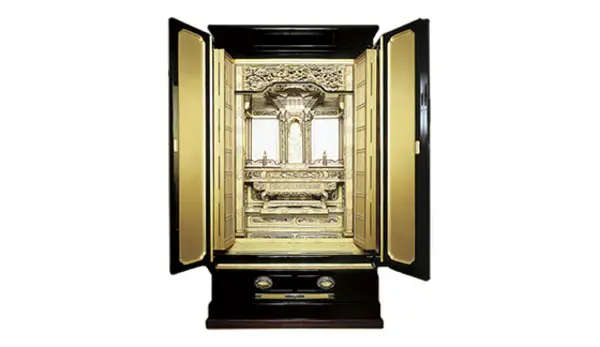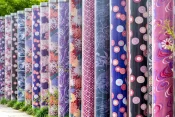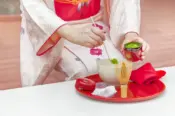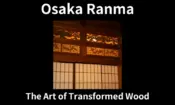Osaka Butsudan: A Glimpse into Japanese Spirituality and Craftsmanship
Image Source:Kogei Japan official Site
Osaka, a city renowned for its rich cultural and spiritual heritage, is home to one of Japan’s most unique and exquisite traditional crafts: the Osaka Butsudan. These beautiful Buddhist altars, made from fine wood, lacquer, and gold leaf, are more than just religious objects—they are a testament to the artistry and devotion of Japanese craftsmen. Whether you’re an admirer of Japanese culture or a visitor looking to explore its deeper spiritual aspects, Osaka Butsudan offers a window into Japan’s rich history and traditions. In this article, we’ll explore the history, craftsmanship, and unique qualities of Osaka Butsudan, and why they are a must-see for anyone visiting Osaka.
The History of Osaka Butsudan
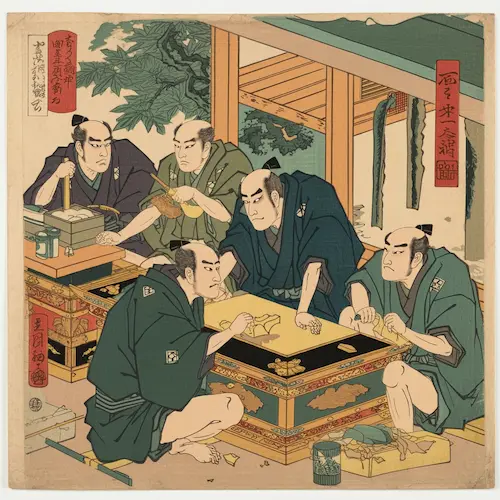
The origins of the Butsudan, or Buddhist altar, can be traced back to the Nara period (710-794 AD), when Buddhism was spreading throughout Japan. However, it was during the Edo period (1603-1868) that Osaka emerged as a major center for Butsudan craftsmanship. Osaka’s strategic location as a trading hub allowed it to access high-quality materials, such as fine wood and gold leaf, which were essential for creating Butsudan.
Over time, Osaka’s Butsudan artisans developed their own distinctive style, incorporating influences from other regions while also infusing their creations with local flavor. The result was a unique form of Butsudan that stood out for its elaborate carvings, meticulous craftsmanship, and use of luxurious materials. These altars became highly sought after by temples, wealthy merchants, and samurai households, not only for their religious significance but also as symbols of status and prestige.
The Craftsmanship Behind Osaka Butsudan
Creating an Osaka Butsudan is a labor of love and skill. The process begins with selecting the finest materials, such as Japanese cypress (hinoki) or zelkova wood (keyaki), known for their durability and beautiful grain. These woods are carefully carved by hand, often taking months to create the intricate designs that adorn the altar.
Next comes the lacquering process, which involves applying multiple layers of lacquer to protect the wood and enhance its natural beauty. Each layer is meticulously polished to a high gloss, creating a smooth, mirror-like finish. The use of gold leaf is another defining feature of Osaka Butsudan. Artisans apply thin sheets of gold leaf to the altar’s surface, adding a radiant, luxurious touch that reflects light beautifully and symbolizes spiritual purity.
Every step in the creation of an Osaka Butsudan requires incredible attention to detail and a deep respect for tradition. It is not just about making a beautiful object; it is about crafting something that embodies the spiritual essence of Buddhism and Japanese culture.
Why Osaka Butsudan is Unique
Osaka Butsudan is unique for several reasons. First, the craftsmanship involved is second to none. Each Butsudan is a masterpiece, created by artisans who have spent decades perfecting their skills. The intricate carvings, the careful application of lacquer, and the use of gold leaf all contribute to a sense of elegance and refinement that is hard to find elsewhere.
Second, Osaka Butsudan often features distinctive designs and motifs that reflect local culture and history. From intricate floral patterns to Buddhist symbolism, each altar tells a story of faith, devotion, and artistic excellence. This blend of art and spirituality is what sets Osaka Butsudan apart from other types of Buddhist altars found throughout Japan.
Finally, there is the cultural significance of Osaka Butsudan. These altars are not just religious objects; they are a reflection of Osaka’s rich history and its role as a center of trade, culture, and craftsmanship. Owning an Osaka Butsudan is like owning a piece of Japanese history, a tangible connection to the spiritual and artistic traditions of the past.
Where to Experience Osaka Butsudan in Osaka
If you want to experience the beauty of Osaka Butsudan firsthand, there are several places in Osaka where you can do so. Many temples in Osaka, such as Shitennoji, house exquisite examples of Butsudan, showcasing the finest craftsmanship and artistic detail. Visiting these temples offers a chance to see these altars in their proper context, surrounded by the serene and spiritual atmosphere they were designed to enhance.
For a closer look at the craft, you can visit workshops and studios where master craftsmen still create Butsudan using traditional methods. Some workshops offer guided tours and demonstrations, allowing visitors to watch the artisans at work and learn about the techniques used to create these beautiful pieces.
And if you’re interested in purchasing an Osaka Butsudan, there are specialty shops in Osaka that offer a range of options, from smaller, more affordable altars to larger, custom-made pieces. These shops often have knowledgeable staff who can help you choose the perfect Butsudan for your home or collection.
Conclusion
Osaka Butsudan is more than just a religious artifact; it is a work of art that embodies the spiritual and cultural heritage of Japan. Whether you are exploring the spiritual side of Japan or looking for a unique piece of Japanese craftsmanship, Osaka Butsudan offers a glimpse into the artistry and devotion that have shaped Japanese culture for centuries. So, when you visit Osaka, take the time to discover the beauty and craftsmanship of these exquisite altars—and perhaps bring a piece of this rich tradition into your own home.
